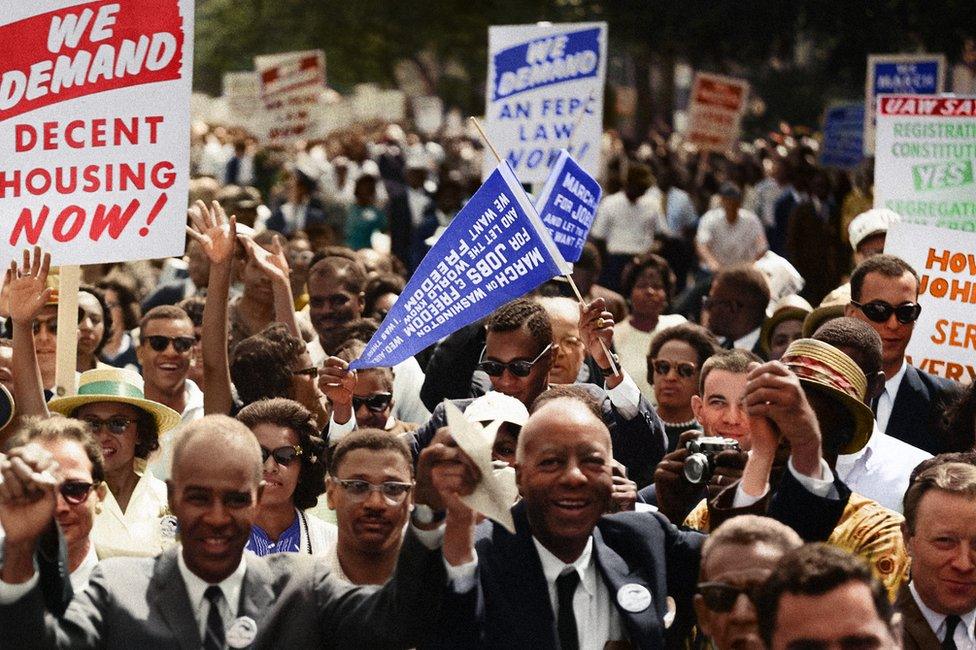Colourising historical photos of the civil rights movement
- Published
Friday is the 92nd anniversary of the birth of Martin Luther King - and, after extensive historical research, Jordan J Lloyd has added digital colour to black-and-white photographs of Dr King and other public-domain images of the US civil rights movement in the 1960s.

Martin Luther King at a press conference in 1964
"People have a right to access their history," Lloyd told BBC News.
"And colour removes a level of abstraction that usually distances ourselves from the past
"All of a sudden, the photo feels real, more visceral."
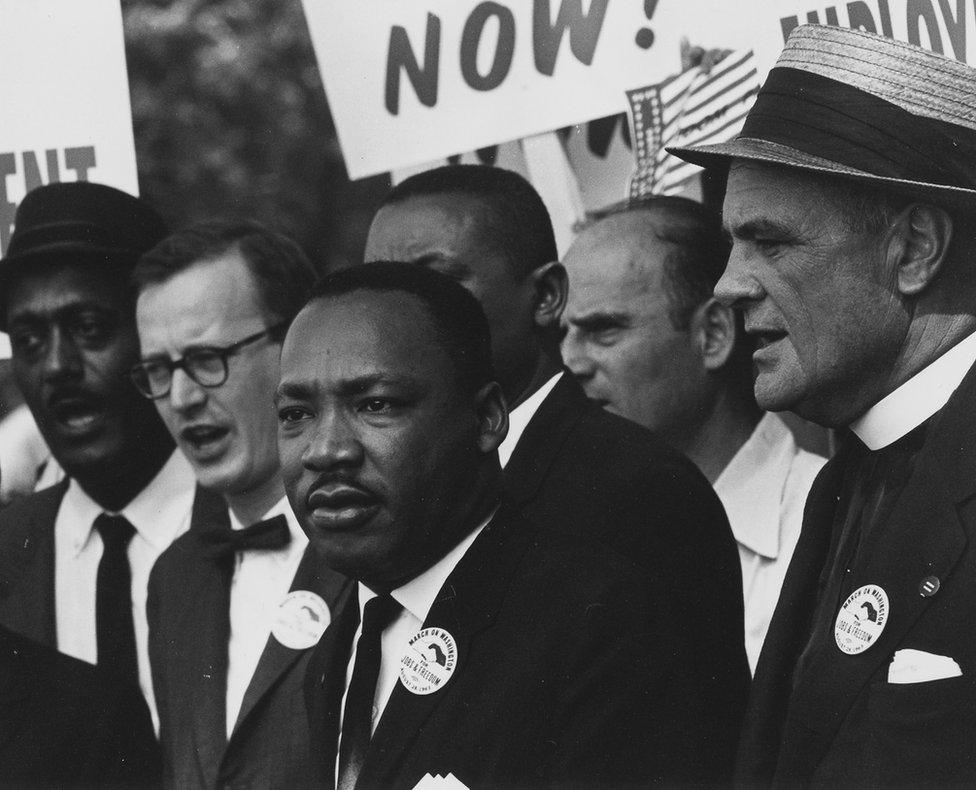
Dr King led a march on Washington in August 1963

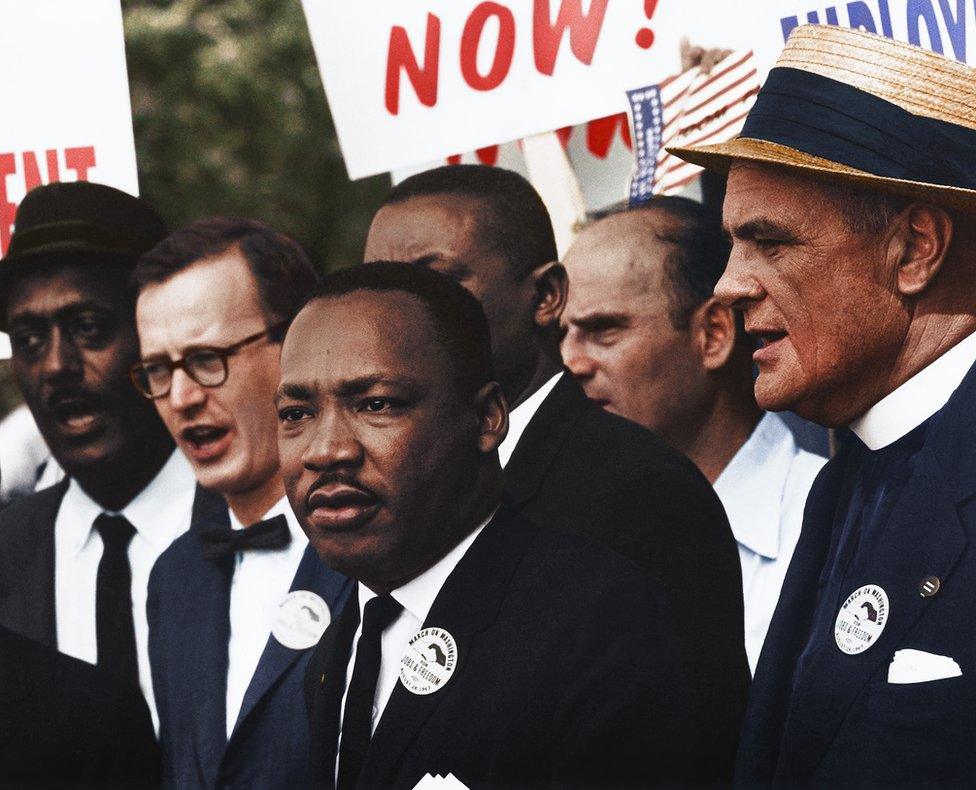
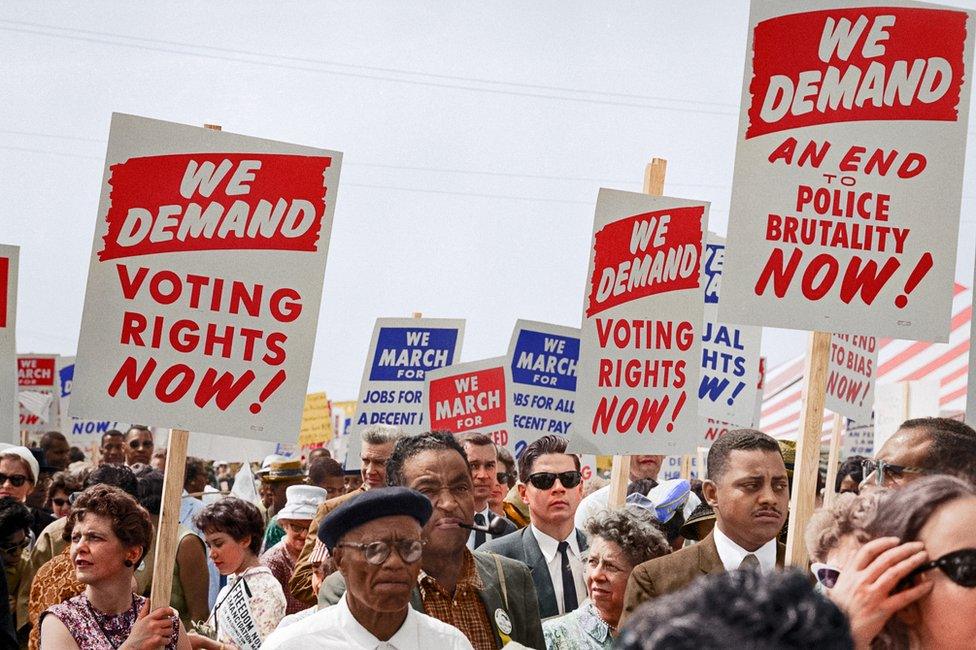
In 1963, a multiracial rally of a quarter of a million people marched peacefully on Washington to highlight racial injustices and put pressure on Congress to pass a civil-rights bill proposed by President John F Kennedy.
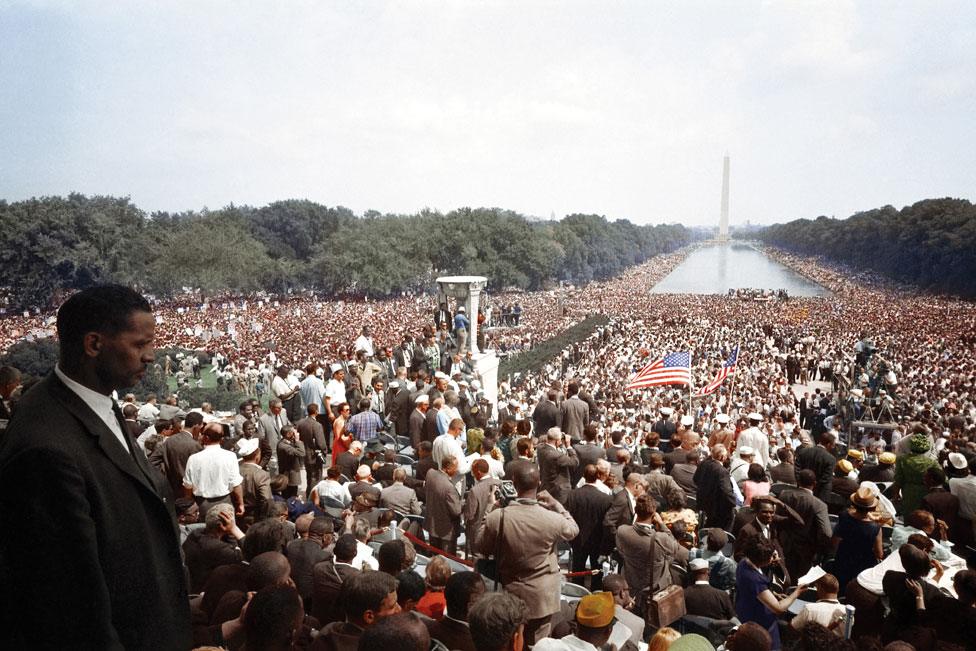
The rally received worldwide media coverage - but the federal government took no political action to deal with the issues raised.
"Progress is made through struggle," Lloyd says.
"And I think a lot of people today can make a parallel between social and racial inequality in the 1960s and today."
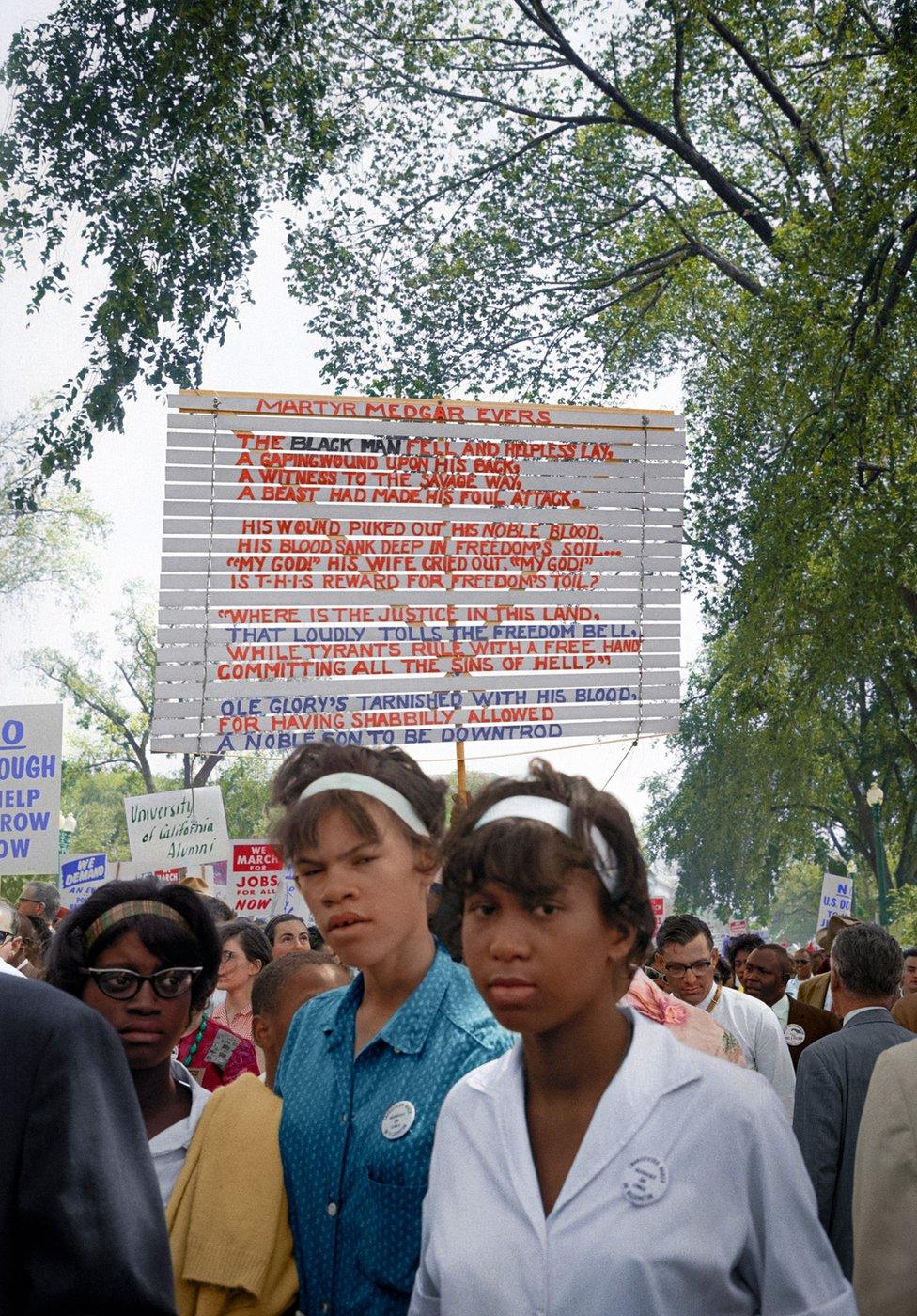
Lloyd sourced the photos from the Library of Congress, external - but his research also unearthed a handful of colour photos actually taken on the march.
"Shooting in colour at the time was prohibitively expensive to reproduce," he says.
"And nowadays, the genuine colour images can only be used by purchasing an expensive license.
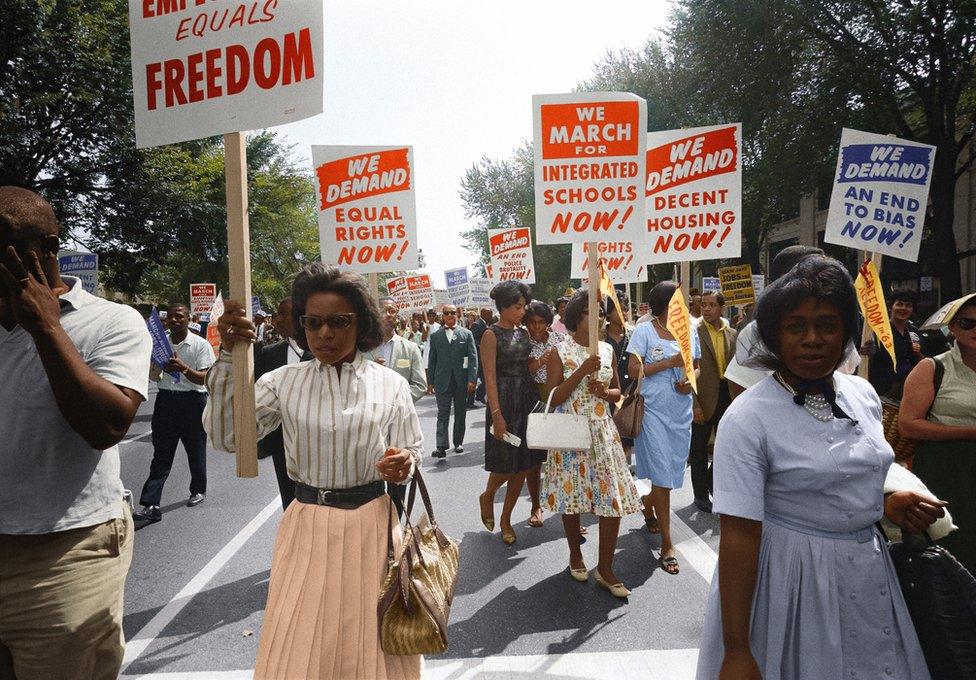
"Skin is a complex topic.
"It is also what we're naturally drawn to when we look at photographs for the first time.
"People's skin tones vary by ethnicity but also by age too, which has to be taken into account along with the ambient lighting and weather conditions of the day.
"In these photos, we can make a determination of the weather by looking at things like shadows and the weather reports from the day of the march.
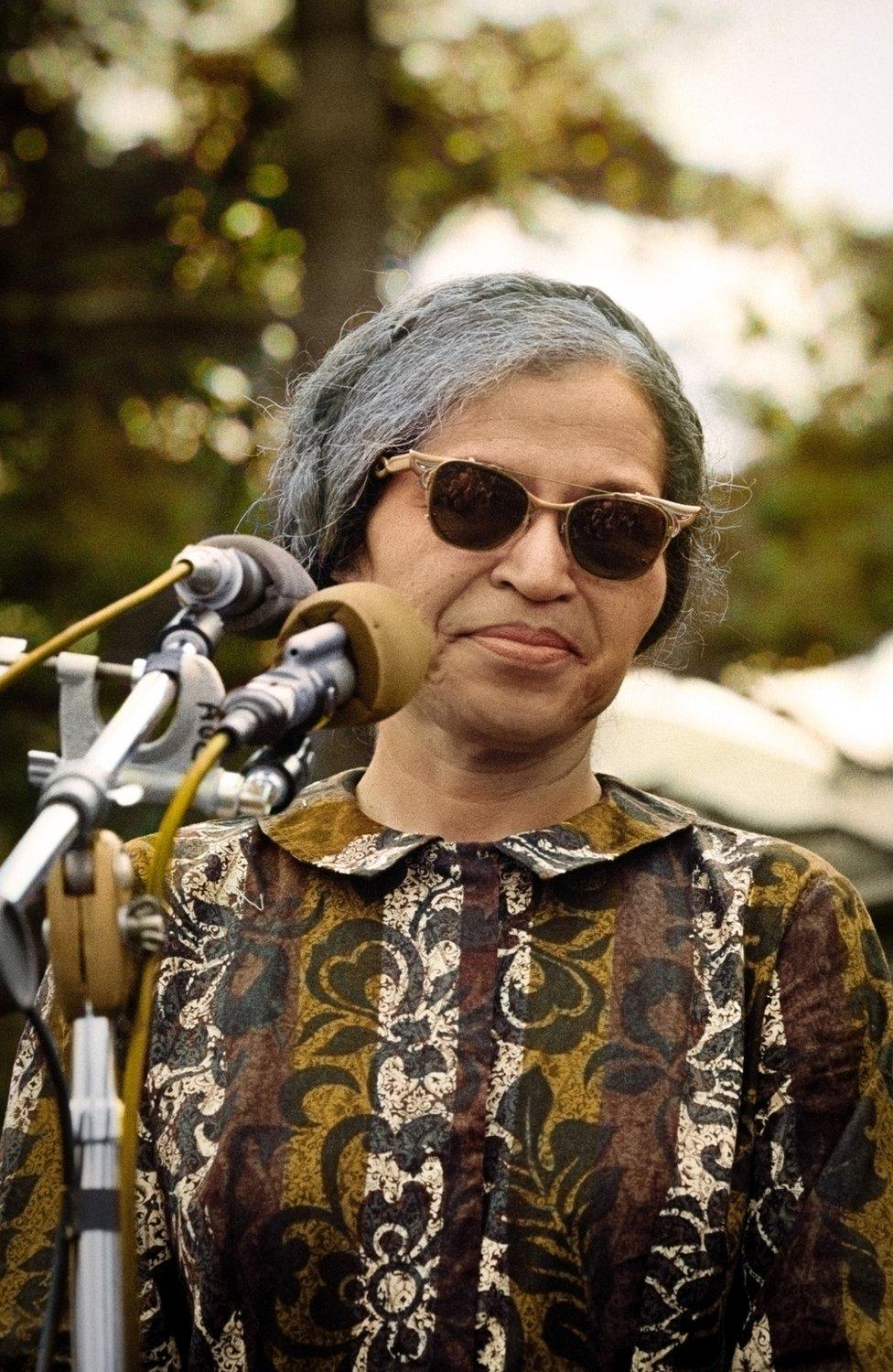
Rosa Parks speaks at a march in 1968

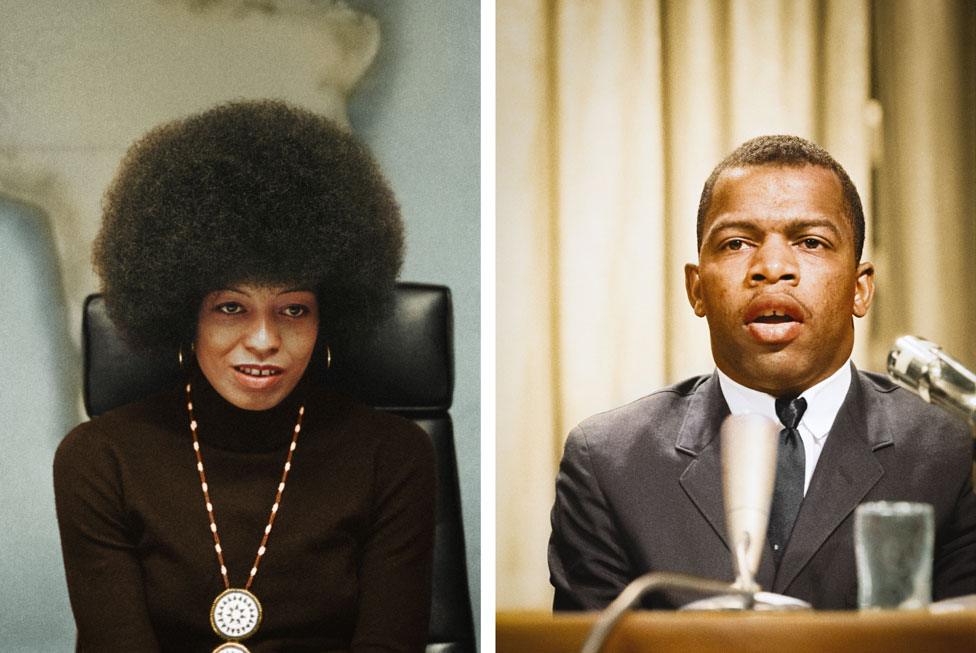
Angela Davis in 1974 and John Lewis in 1964
"Critics of colourised work conflate the results of a technological process, like AI [artificial intelligence], and claim it's cultural vandalism.
"I believe that the laborious process of restoring, researching and colourising photographs make an authentic supplement [to history], rather than a substitute.
"Something familiar can then be seen and explored with a different perspective."
"[The civil-rights movement] is such an important part of America's history and is often consigned to small black-and-white photos in textbooks and online."
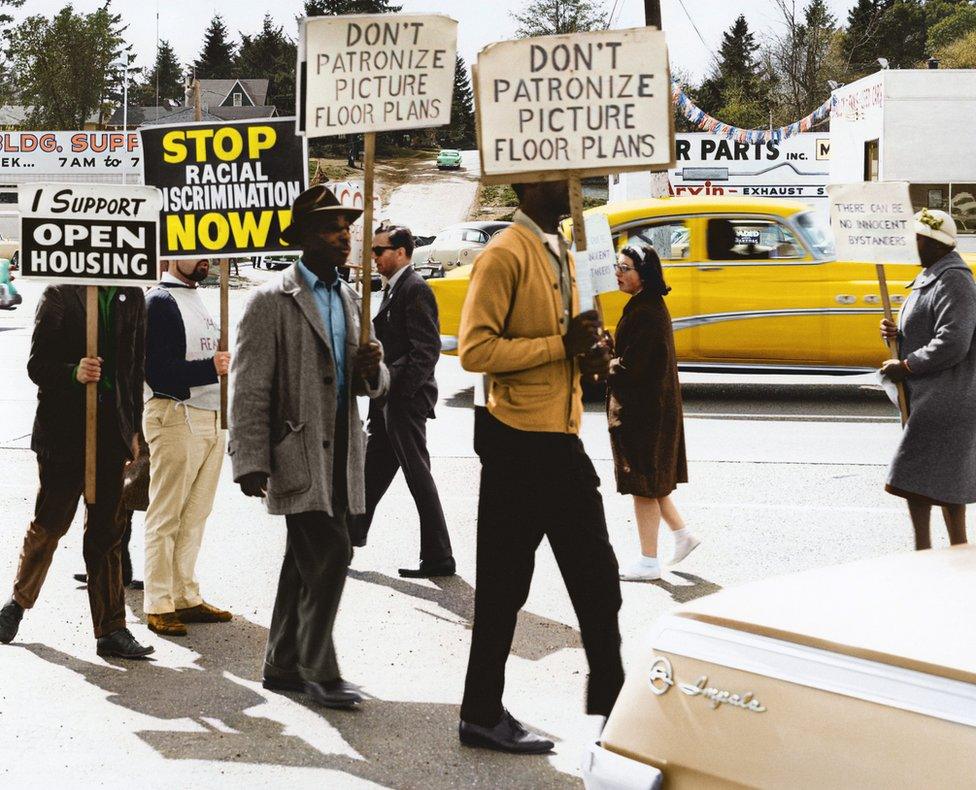
A 1964 demonstration at the Picture Floor Plans estate agent, in Seattle, Washington
Lloyd's photos are available to be freely used and adapted, at Unsplash, external.
"This important part of American history deserves to be viewed and shared by as many people as possible, whether it be in class presentations, on posters, book covers, et cetera," he says.
